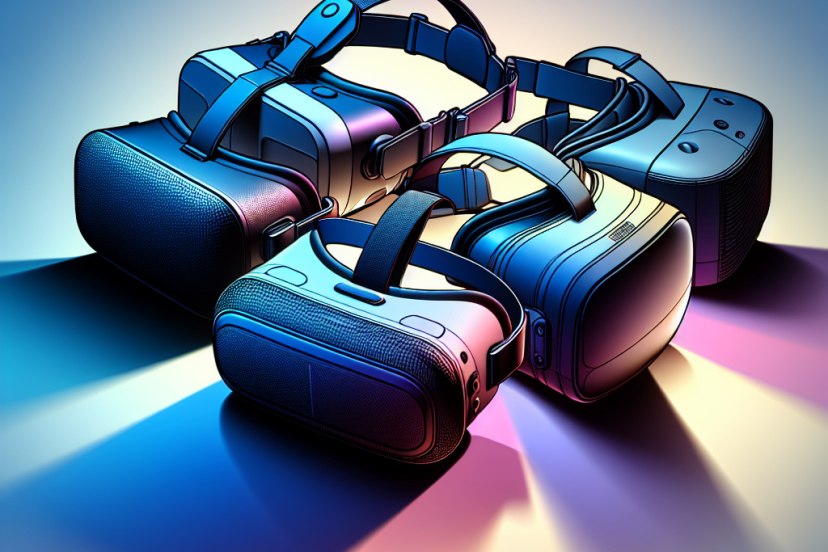Classic Console Chronicles: Celebrating 90s Gaming Icons
Classic Console Chronicles: Celebrating 90s Gaming Icons
The Rise of 16-Bit Gaming
The 1990s marked a pivotal era in the evolution of video gaming, characterized by technological advancement and innovation in gameplay. As the industry moved away from 8-bit graphics, the introduction of 16-bit consoles like the Sega Genesis and Super Nintendo Entertainment System (SNES) revolutionized the gaming landscape. These platforms offered richer graphics, improved sound, and gameplay that was deeper and more engaging than ever before.
Sega Genesis: The Launchpad of Iconic Titles
Launched in 1988, the Sega Genesis, known as the Mega Drive in many regions, was instrumental in popularizing console gaming. With its speedy processing power, gamers were treated to fast-paced titles such as “Sonic the Hedgehog.” This game not only established Sonic as a mascot for Sega but also set the standard for platformers, combining speed, colorful visuals, and memorable music.
Another hallmark title for the Genesis was “Street Fighter II.” This arcade classic brought fighting games into the living room, popularizing competitive gaming and culminating in iconic face-offs that would span decades. The Genesis also showcased rougher gems like “Earthworm Jim”; its quirky humor and unique gameplay mechanics established it as a cult classic.
Super Nintendo: A Technological Marvel
Coinciding with the Genesis, the Super Nintendo Entertainment System (SNES) debuted in 1990, offering advanced graphics and sound capabilities. The SNES became synonymous with some of the greatest games of the era, setting the stage for franchises that are still beloved today.
Iconic Titles and Franchises
Among the most significant titles on the SNES was “The Legend of Zelda: A Link to the Past.” This game reevaluated the action-adventure genre with its open-world design and intricate puzzles. Similarly, “Super Mario World,” featuring Yoshi, not only redefined platforming gameplay but solidified Mario’s status as a cultural icon.
RPG aficionados found their home on the SNES with classics like “Final Fantasy VI” and “Chrono Trigger.” These games introduced intricate storytelling, unforgettable characters, and groundbreaking gameplay mechanics that would influence countless RPGs in the years that followed.
The Impact of 32-Bit Era: PlayStation and Sega Saturn
The mid-90s saw the introduction of 32-bit systems, pushing the boundaries of what consoles could achieve. The Sony PlayStation and Sega Saturn marked a shift towards 3D graphics and CD-ROM technology.
Sony PlayStation: A Revolution in Game Design
Launched in 1994, the Sony PlayStation changed the landscape for gaming. It introduced titles like “Final Fantasy VII,” which revolutionized JRPGs with its cinematic storytelling and detailed graphics. The game became a benchmark for narrative depth in video games, solidifying the PlayStation’s role in the gaming industry.
“Metal Gear Solid,” another iconic release, introduced players to stealth-based gameplay and complex narratives. The enigmatic protagonist, Solid Snake, became an enduring symbol of video gaming story arcs, showcasing how game design and storytelling could converge.
Sega Saturn: A Short-Lived Yet Impactful Legacy
Though the Sega Saturn struggled to find its footing in the marketplace, it gave rise to some remarkable titles, including “Nights into Dreams” and “Virtua Fighter.” These games pushed the envelope in terms of graphics and gameplay mechanics, showcasing Sega’s commitment to innovation.
The Home of Fighting Games: Arcade Culture in the 90s
The 90s is often hailed as the golden age of fighting games. The prevalence of arcades allowed gamers to gather and compete in real-time, fostering a culture of camaraderie and rivalry.
Dominating Titles
“Street Fighter II” not only dominated arcades but also paved the way for sequels like “Street Fighter Alpha” and “Street Fighter III.” Meanwhile, “Mortal Kombat” brought a darker aesthetic to the scene with its graphic violence and complex narratives, sparking fierce debates about content in video games.
The immense popularity of fighting games led to tournaments and communities dedicated to honing skills, a cultural phenomenon that continues today, exemplified by events like EVO.
The Puzzle and Platforming Boom
As 3D graphics began to dominate, classic 2D gameplay experienced a renaissance through innovation in both puzzle and platforming genres.
Notable Titles
“Super Mario 64,” released for the Nintendo 64 in 1996, showcased the potential of 3D platforming. It opened up vast worlds for exploration, establishing a template that would influence future titles for decades. Similarly, “Donkey Kong Country” elevated platforming with its engaging gameplay mechanics and stunning pre-rendered graphics.
The puzzle genre also received groundbreaking titles such as “Tetris,” which transcended the confines of the 90s, establishing itself as a timeless classic with its simple yet challenging gameplay. Games like “Puzzle Bobble” combined elements of match-three gameplay with competitive features, giving rise to a range of successors.
The Role of Handheld Consoles
The 90s also brought significant innovations in handheld gaming, with devices like the Nintendo Game Boy and the Sega Game Gear. These consoles made it possible for gamers to enjoy their favorite titles on the go, revolutionizing mobile play.
Game Boy’s Dominance
The Game Boy, launched in 1989, soared in popularity throughout the 90s. Titles like “Pokémon Red and Blue” tapped into the imagination of children and adults alike, creating a phenomenon that not only impacted gaming but generated an entire franchise, including trading cards, animated series, and merchandise.
The Game Gear, Sega’s foray into handheld gaming, boasted color graphics and a library of titles, though it failed to unseat the Game Boy’s dominance.
Soundtracks and Music Evolution
One of the standout features of 90s gaming was the evolution of soundtracks. Both the SNES and PlayStation introduced memorable compositions that added emotional resonance to gaming experiences.
Memorable Compositions
The music for “The Legend of Zelda: Ocarina of Time” is often cited as one of the greatest video game scores. It not only supplemented the game’s vast landscapes and poignant story but also influenced future soundtracks in the industry.
The Era of Chip Tunes
8-bit and 16-bit soundtracks often featured catchy melodies, or chip tunes, which remain beloved by retro enthusiasts today. Conferences and tours dedicated to video game music showcase the ongoing appreciation for these compositions.
The Emergence of Online Play
The late 90s heralded the dawn of online gaming, paving the way for multiplayer experiences that would eventually redefine gaming interactions. Titles like “Quake” and “Doom” introduced players to the thrill of competing against others over the Internet.
The Start of Online Communities
As gaming shifted towards digital connectivity, online communities began to form around multiplayer games. Platforms like AOL and Compuserve provided the groundwork for what would become various gaming forums, chatrooms, and social networks.
Lasting Legacy of 90s Gaming
The gaming icons of the 90s solidified their place in pop culture history, influencing not just gaming but also movies, television, and merchandise. They sparked a nostalgia that continues to resonate in today’s gaming landscape, with remakes and sequels frequently revisiting these iconic titles.
The role of the 90s console revolution cannot be overstated. From establishing beloved franchises to laying the framework for the gaming industry’s future, the games of this era remain deeply embedded in the collective memory of gamers worldwide. The rich tapestry of this decade continues to be celebrated today, ensuring that classic gaming icons remain relevant and cherished long into the future.




